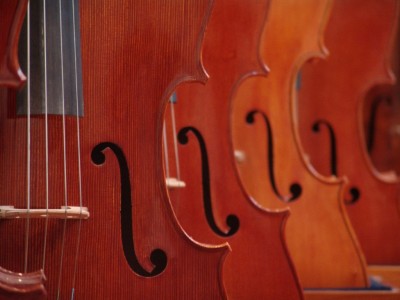Fingerings
Perhaps my most intense pet peeve about playing in an orchestra has to do with fingerings.
When one has to share a part with someone else, one expects a bit of respect. But, unfortunately, that often doesn’t happen — I have known stand partners to write fingerings over almost every note in the part.
To try to play a part with someone else’s fingerings large and prominent, over most every note in a passage, is infuriating to me, especially if this person’s fingering preferences have nothing to do with mine. And I can’t see the notes for the fingerings.
So, when I read Jerry Elias’ latest book about murder in the orchestra world, Death and Transfiguration, I was delighted to find a section devoted to two elderly violists sharing the last stand in a fictional NY orchestra, where one of their eternal problems is Beanie’s putting fingerings into the part shared by Cappy, who annoys Beanie by whistling all the melodies.
I laughed out loud when I read Jerry’s assessment of these long-time stand partners:
“He and Cappy almost came to blows because Beanie pencils in fingerings over virtually every note of his music.”
Then Jerry asked his fictional character Jacobus, the violinist soloist, to explain why this is a problem:
“The gist is that it’s okay to write in your fingerings if you don’t have to share music with anyone else, like if you’re in a string quartet. But when you’re sharing the same part with your stand partner, it can drive him to distraction, since everyone’s hands are different and what makes sense for one musician could be totally useless for another. Also, some musicians come up with a good fingering and stick with it their whole lives, but others like using different fingerings every day depending on what they think is musically appropriate for the moment. Having someone else’s fingerings is like Chinese water torture; at first it’s a mild irritant, but after a while you want to strangle someone, then yourself.”
Chinese torture — I like that. Yes — that’s exactly what it was like!!!


This really struck a chord with me! I, too, find messy, over-marked scores to be a distraction.Choristers, who often share scores, have similar challenges:
http://quodlibet-sarah.blogspot.com/2008/11/confessions-of-obsessive-score-keeper.html
Whenever possible, I purchase my own scores. I know that’s not practical, or desirable, for instrumental ensemble musicians, but it’s a good solution for choristers who obsess over their scores (as I do).
Ann, I’d love to borrow that book! -SHJ
In all the orchestras I’ve ever played with regularly, the convention is that the outside player puts fingerings above the notes and the inside player puts them below. Took a little getting used to at first, but it soon got to be familiar enough (and these days I mostly sit outside anyway so I get the top, yay!). Sometimes I do have to put in my own fingering as a reminder if a partner is doing something radically different. I use more 2nd position than most people I know, for some reason.
I usually don’t have to deal with the fingerings over every note issue except when parts have been loaned to the youth orchestra (grrrrrr…), but I agree that it’s distracting and excessive. I also don’t like when a stand partner pencils in a huge number of “reminder” accidentals when it’s absolutely clear from the key signature that it’s a C# or whatever.